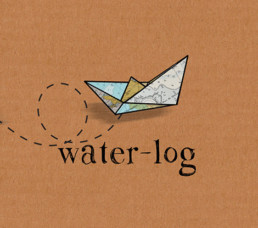It’s morning and I climb our companionway steps to sip my coffee on deck. I nod a greeting to the couple on board the boat anchored behind us, much as I have done on and off for the last four months. They are in their late 60’s and the extent of our friendship is exchanging small talk and pleasantries. But, strangely, it’s an acquaintance that began over three and a half thousand miles away.
In Cuba a man told me that ‘after you’ve been sailing for a while you can go into any anchorage in the world and if there are 10 boats there you can guarantee that you will know one of them’. I’m not quite sure that we’ve got to that large a network of cruising friends yet but there is a distinct feeling of déjà vu present along our current sailing route.
The crossing of the Pacific ocean from various points up and down the coast of the Americas to ports in French Polynesia is certainly nothing new among sailors. Indeed it’s this stretch of water in particular that many people view as the pinnacle of their boating dreams and ambitions. However, with the increasing ease of navigation in these waters, the constant improvements in the accuracy of GPS and the ever-growing numbers of people setting sail what was once a remote and deserted cruising destination is now humming and heaving with boats.
There are organised groupings already, like the Pacific Puddle Jump rally and the Pacific Seafarers radio net, which help to create camaraderie along the lengthy stretches at sea that separate the island groups. Dock and bar-side talk almost always starts with “How was that last passage?” and “Where are you going next?” which adds to the feeling that we have ended up on some form of watery conveyor belt.
Given the limitations of the best sailing seasons for the Pacific ocean this is somewhat understandable. You have an initial choice of whether to complete an exploration of the Pacific in just one season or in several which seems to be the biggest divide. Those who are planning for a single season journey are either focussing their travels on French Polynesia with a view to then looping back to the States via Hawaii or their sights are set on New Zealand or Australia, which allows for roughly six months to get from the east to the west ends of this vast ocean, tucking in safely somewhere for the onset of cyclone season. Whereas a multi-season plan means that you can take your time traversing these waters and either weaving up north of the equator to escape the storm season or hauling-out somewhere within the cyclone belt.
We’re opting for the one-season, 6 or 7 thousand mile route which means that we inevitably keep stumbling across the same boats and same people who are on this equivalent track. The result is that I’m now raising my coffee cup to the couple who were on our dock in Pacific Mexico, who also crossed the equator a week after us, arrived in several of the same anchorages as us in the Marquesas, came into an atoll pass an hour behind us in the Tuamotus, dropped their hook nearby when they reached Tahiti and now wave back at me from their position astern of us in Huahine. It’s as if we’re buddy-boating almost by accident.
If I were suspicious I would almost think that we are being followed but, on the contrary, we seem to be doing it as well. Funny to think that many of us buy our boats and go out sailing as a way of embracing our sense of adventure and exploration into the wilds, a form of declaration that we are different and unusual, only to find that we too are subject to the herd mentality that leads us all to the same anchor spots and immaculate beaches.
There can be no doubt that the number of yachts out here is rising with over 250 boats registered in this year’s Puddle Jump fleet and easily over 200 sailboats in the main anchorage in Tahiti alone. It’s nice to cruise in company at times, having your mates nearby to touch base with, especially when you have kids. We’ve been in the happy position to have totally impromptu reunions with friends made 6 months, 9 months and even 2 years ago, from all different countries, just by the pure chance of where we drop the hook. It’s not uncommon to hear a sudden knock on the side of the hull, and be greeted by a cheery “ahoy!” and a familiar face no matter where we are.
Now as we approach our next stop we make a game of it, guessing how many boats we already know out of the handful we can just make out in the anchorage. Is it just a case of safety in numbers; the need to have other peers to compare notes with? Perhaps but then we’re also all referring to the same information sources, the cruising guides, compendiums and blog posts of those brave boats who went before us, taking the element of search out of our exploration, almost as if we’re striking certain points on a Pacific greatest hits list. But, for all that we might fight against it, there is something nice about seeing a friendly face when you pull in and being able to knock glasses with an old mate at the bar.
As for our route from here, well I’m pleased to say that it includes a few stops that no one in our current fleet seems to be heading to. Will we be lonely? Unlikely as we’re bound to bump into a few boats we know. But it should mean that at least we have some new stories to tell when we next see the rest of our friends.

